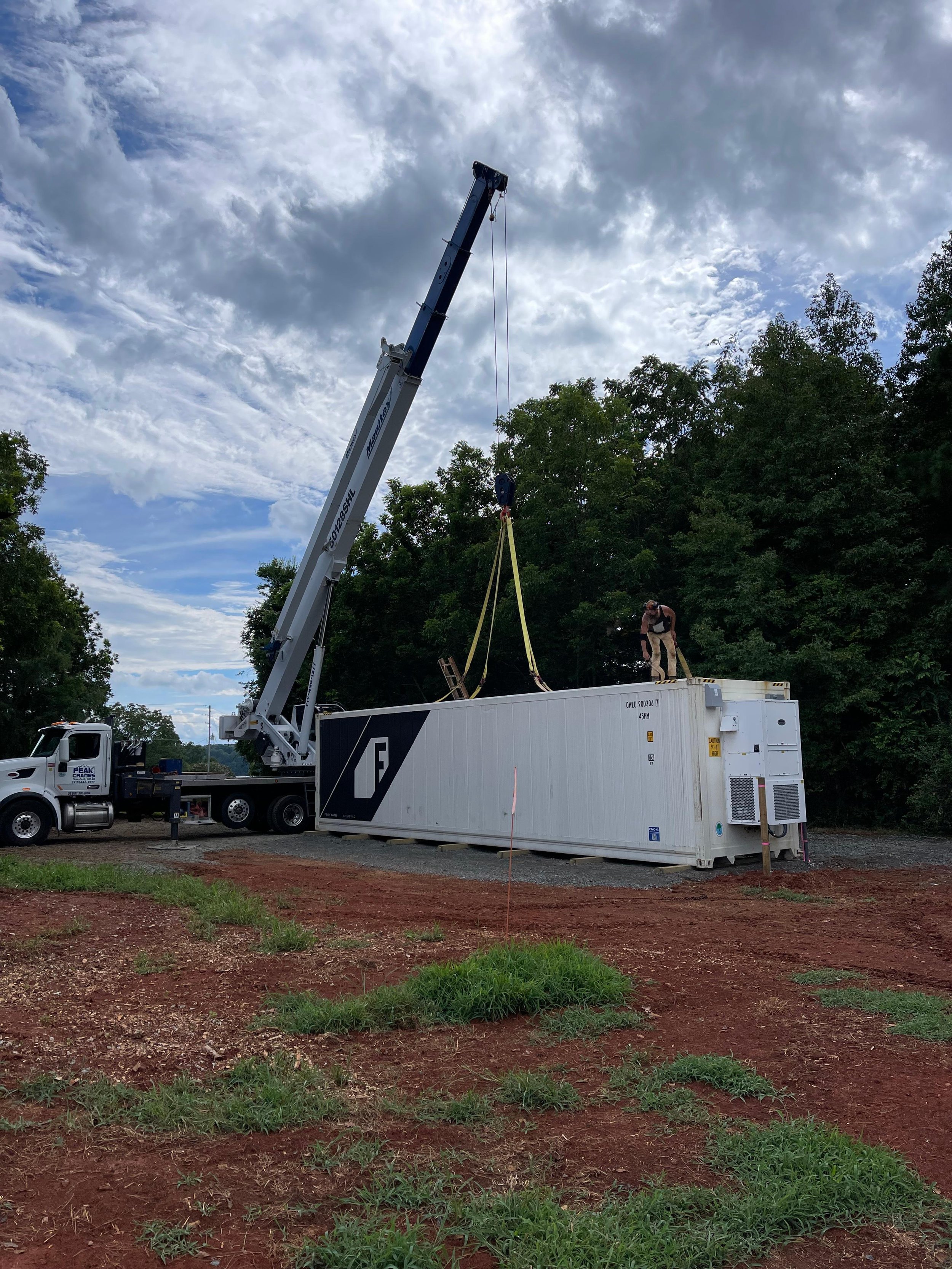Sustainable Campus Initiatives: Spotlight on Hydroponic Farming
Higher education institutions constantly seek innovative methods to contribute positively to the environment while educating future leaders. As sustainability becomes a more pressing global issue, colleges and universities are uniquely positioned to lead by example, turning their campuses into living laboratories for sustainable practices. One of the most promising technologies in this area is hydroponic farming, which uses a nutrient-rich water solution instead of soil to grow plants.
Hydroponic systems use significantly less water than traditional farming and allow for dense and efficient plant production in urban settings or areas with poor soil quality. This technology goes beyond just producing food; it’s a tool for education, research, and fostering a culture of sustainability among students.
Freight Farms, a leader in the development and provisioning of hydroponic farming systems, has been at the forefront of this movement. Their innovative solutions have enabled educational institutions worldwide to implement green technologies and sustainable farming practices right on their campuses. By integrating hydroponic farms, schools can reduce their environmental impact, provide fresh, local produce to their communities, and offer hands-on learning opportunities for students.
The Rise of Hydroponics in Education
Hydroponic farming is not just an agricultural innovation; it's a revolutionary teaching tool gaining traction in educational institutions across the globe. By eliminating the need for soil, hydroponic systems allow plants to grow through a nutrient-rich water solution, which can be controlled and managed in confined spaces. This technology facilitates the cultivation of plants year-round, regardless of seasonal constraints, making it ideal for educational environments where space and time are often limited.
Understanding Hydroponic Technology
At its core, hydroponics involves growing plants in a water-based, nutrient-rich solution, using various systems such as wicking, deep water culture, and nutrient film techniques. These methods can be adapted to various spaces and budgets, making hydroponics a versatile option for schools and universities. The system's closed-loop nature also means that it uses about 90% less water than traditional agriculture, a critical factor in promoting campus sustainability.
Benefits in Educational Settings
The integration of hydroponic farming into educational settings offers numerous advantages:
Space Efficiency: Hydroponic systems can be installed in underutilized spaces such as parking lots, basements, or empty hallways, maximizing limited campus real estate.
Water Conservation: Hydroponics dramatically reduces the water needed for plant growth by recycling water in a closed system, aligning with many institutions’ sustainability goals.
Controlled Learning Environment: Students can study plant growth in a controlled environment, which is less susceptible to the variables that affect traditional farming. This provides consistent, repeatable results for academic study.
Case Studies from Freight Farms
Freight Farms has empowered numerous educational institutions to adopt hydroponics. For instance, at schools like Stony Brook University and Auburn University, Freight Farms' Greenery™ containers are not only used to produce fresh, local food but also as living classrooms. Students actively participate in hands-on learning experiences focused on sustainable agriculture, plant biology, and the environmental sciences, all facilitated within the confines of compact, mobile farming units.
These real-world applications on campus have enhanced educational outcomes and contributed to institutions' sustainability goals by reducing food miles, minimizing waste, and promoting local produce consumption among the campus community.
Educational Benefits of Hydroponics
The educational benefits of hydroponics extend far beyond agricultural training. By incorporating these systems into their curricula, schools can provide students with a robust educational framework that intersects with multiple disciplines.
Hands-on Learning Experiences
Hydroponics offers students experiential learning opportunities that are often absent in traditional classroom settings. Through active participation in growing food, students learn about the science of plant nutrition, the importance of water pH, and the roles different nutrients play in plant growth. This hands-on approach helps solidify abstract biology, chemistry, and environmental science concepts.
Curriculuar Integration
Several universities have woven hydroponics into their curriculum across various disciplines:
Science, Technology, Engineering, and Mathematics (STEM): Projects involving hydroponics provide practical applications for theoretical knowledge, engaging students in STEM fields.
Environmental Science: Students explore sustainable farming practices, studying the impact of conventional agriculture on the environment versus hydroponic systems.
Agriculture: When integrated with hydroponics, traditional agricultural studies are enriched with modern techniques that are more relevant in today's urbanized, climate-challenged world.
Developing Future-Oriented Skills
Hydroponic farming also prepares students for future challenges and careers by instilling problem-solving, sustainability, and innovation skills. The experience of managing a hydroponic farm requires understanding complex systems, troubleshooting issues, and innovating for better efficiency and productivity.
Operational and Economic Advantages of Hydroponic Farming in Educational Settings
Adopting hydroponic farming on campus isn't just an educational asset; it also presents a host of operational and economic benefits. These advantages make hydroponics an appealing option for educational institutions looking to invest in sustainable and cost-effective agricultural solutions.
Cost Analysis of Hydroponic Systems
Initially, the setup cost for a hydroponic farm can be significant. However, the long-term savings and efficiencies often justify the upfront investment. Freight Farms, for example, offers container farms that are fully outfitted with all necessary hydroponic equipment, reducing the complexity and cost of starting from scratch. These farms are designed to maximize yield in a minimal footprint, leading to lower ongoing costs in terms of space and resources.
Reduced Water and Nutrient Costs: Hydroponic systems recycle water and nutrients, drastically reducing the need to replenish these elements. This can lead to significant savings, particularly in regions where water is scarce or expensive.
Lower Labor Costs: Automated systems for nutrient delivery and climate control minimize the need for constant human intervention, allowing for reduced labor costs compared to traditional farming methods.
Resource Efficiency
Hydroponic farming is remarkably resource-efficient, which is critical for sustainability initiatives on college campuses. By using controlled environments, these systems minimize the loss of nutrients and water to the environment, offering a more sustainable alternative to soil-based agriculture.
Space Efficiency: Hydroponic systems can produce more food per square foot than traditional farms. This high-density approach is particularly beneficial on crowded college campuses, where space is at a premium.
Energy Efficiency: Modern hydroponic farms like those provided by Freight Farms are often equipped with LED lighting and climate control systems that optimize energy use, further reducing the ecological footprint of these farming operations.
Long-Term Financial Benefits
The economic benefits of hydroponic farming extend beyond direct cost savings. By producing fresh, local food, institutions can significantly reduce their food procurement costs. Additionally, campuses with hydroponic farms can become more self-sufficient, lessening their reliance on external produce sources, which is especially valuable during supply chain disruptions.
Enhanced Campus Dining: Institutions can offer fresher, more nutritious options in their cafeterias, which can improve student satisfaction and health.
Community Engagement and Revenue: Some campuses sell their hydroponic produce to local restaurants or farmers' markets, generating additional revenue and enhancing community relationships.
Case Studies of Successful Implementations
Several case studies highlight the successful integration of Freight Farms’ systems into college campuses to demonstrate the practical applications and benefits of hydroponic farming in educational settings.
Auburn University
At Auburn University, two Greenery farms were implemented to supply lettuce to campus dining facilities while providing students with hands-on learning experiences. Students in the horticulture program grow the produce, experiment with different crops, and facilitate the department-dining hall relationship, gaining hard and soft skills to utilize in their future careers. Read the Auburn University case study to learn more.
Saint Joseph’s College of Maine
In addition to serving fresh and local food year-round, Saint Joseph’s College of Maine wanted to bring a Freight Farm to campus to offer meaningful opportunities for student employment, create community-based and multidisciplinary learning curricula, and improve sustainability initiatives. Read the Saint Joseph’s College of Maine case study to learn more about their project.
These examples illustrate the diverse benefits of integrating hydroponic farming into college campuses to enhance educational outcomes and foster a sustainable food system.
Getting Started with Hydroponic Farming on Your Campus
Implementing hydroponic farming at a college or university can seem daunting, but with a clear plan and the right resources, it can become a cornerstone of your institution's sustainability and educational initiatives. Here’s a step-by-step guide to kickstart hydroponic farming on your campus, leveraging Freight Farms’ innovative technology and support.
Step 1: Assess Your Needs and Goals
The first step in establishing a hydroponic farm is to assess your institution's specific needs and sustainability goals. Consider:
Space Availability: Determine where the hydroponic system will be located. Freight Farms’ systems are compact and can be placed on rooftops, parking lots, or unused land.
Educational Objectives: Define how the hydroponic farm will integrate with curricula or research programs. Will it be used to teach specific courses, conduct research, or provide general educational opportunities?
Food Production Goals: Decide whether the farm will primarily serve educational purposes, provide food for the campus, or both.
Step 2: Secure Funding
Funding is a crucial aspect of launching a hydroponic farming project. Explore various funding sources such as:
Grants: Look for sustainability grants from government agencies, non-profit organizations, and private foundations.
University Budgets: Propose the hydroponic farm as a capital investment under the university’s sustainability or educational enhancement budgets.
Partnerships: Consider partnering with local businesses or alumni who are interested in supporting sustainable initiatives.
Step 3: Choose the Right Technology and Partner
Selecting the right technology and partner is essential for the success of your hydroponic farm. Freight Farms offers a range of solutions that are particularly suited for educational environments:
The Greenery Container Farm: This all-in-one solution is ideal for campuses. It features advanced hydroponic systems, climate control, and a fully operational growing space.
Support and Training: Freight Farms provides comprehensive training and ongoing support to ensure your campus can effectively manage its hydroponic farm.
Step 4: Implement and Integrate
With funding and technology in place, the next step is to implement the hydroponic system:
Installation: Coordinate with Freight Farms to deliver and install the hydroponic farm.
Training: Ensure staff and students are trained on operating and maintaining the system.
Integration into Campus Life: Officially integrate the farm into campus operations, curricula, and community engagement activities.
Step 5: Monitor, Evaluate, and Expand
Once your hydroponic farm is operational, it’s important to monitor its progress and evaluate its impact:
Collect Data: Gather data on productivity, educational outcomes, and sustainability impacts.
Assess Performance: Regularly assess the system's performance and adjust as needed.
Plan for Expansion: If the project proves successful, consider expanding or adding additional units to increase production and educational opportunities.
Hydroponic farming offers a dynamic and sustainable method for colleges and universities to meet educational and environmental goals. By adopting these systems, institutions not only enhance their sustainability initiatives but also provide students with valuable hands-on learning experiences that prepare them for future challenges.
By leveraging the technology and support offered by Freight Farms, educational institutions can transform their approach to agriculture, making it more sustainable, efficient, and integrated into the fabric of academic life. As the demand for sustainable practices grows, hydroponics will undoubtedly play a crucial role in shaping the future of education and agriculture.










